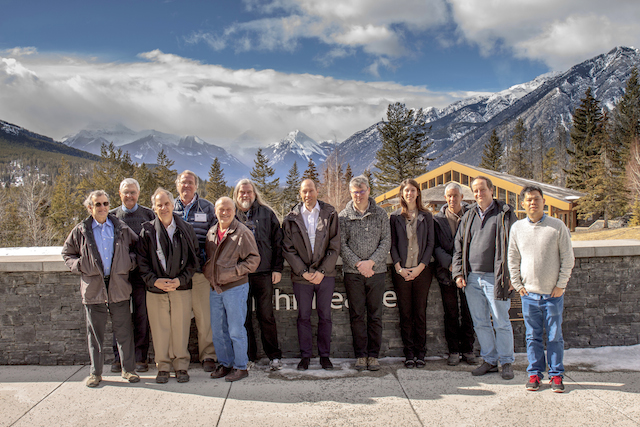Improving the Quantitative Interpretation of Simulation Models (16w5117)
Organizers
Leonard Smith (London School of Economics (and Pembroke College Oxford))
Robert Rosner (University of Chicago)
Description
The Banff International Research Station will host the "Improving the Quantitative Interpretation of Simulation Models" workshop from March 13th to March 18th, 2016.
On March 13th, twenty scientists, mathematicans, statisticians and and computer modellers met in Banff to discuss how we might do everything better. Computer models are used to simulate jsut about everything these days, from traffic lights and surf conditions to climate change and the stability of the global economy. Neverthe less, the connection between the numbers that come out of computers and the things we measure, and feel, in the world is not as well understood as we often assume it is. We call what comes out of a weather model "temperature" and we call the reading of a thermometer "temperature," but giving them the same name is not enough to make them the same sort of thing.
Discussions centered on how we interpret our models, and how we tune them to more closely reflect reality, and even what we mean by "close" in this context. The meeting was unique focusing on discussions of particualr questions of deep interest, and exploring wide ranging views of the experts assembled, rather than a collection of lectures from different disciplines. The facilities of BIRS proved of particular value buy allowing and enhancing the dynamic of this nontraditional meeting.
The Banff International Research Station for Mathematical Innovation and Discovery (BIRS) is a collaborative Canada-US-Mexico venture that provides
an environment for creative interaction as well as the exchange of ideas, knowledge, and methods within the Mathematical Sciences, with related disc
iplines and with industry. The research station is located at The Banff Centre in Alberta and is supported by Canada's Natural Science and Engineeri
ng Research Council (NSERC), the U.S. National Science Foundation (NSF), Alberta's Advanced Education and Technology, and Mexico's Consejo Nacional
de Ciencia y Tecnología (CONACYT).






